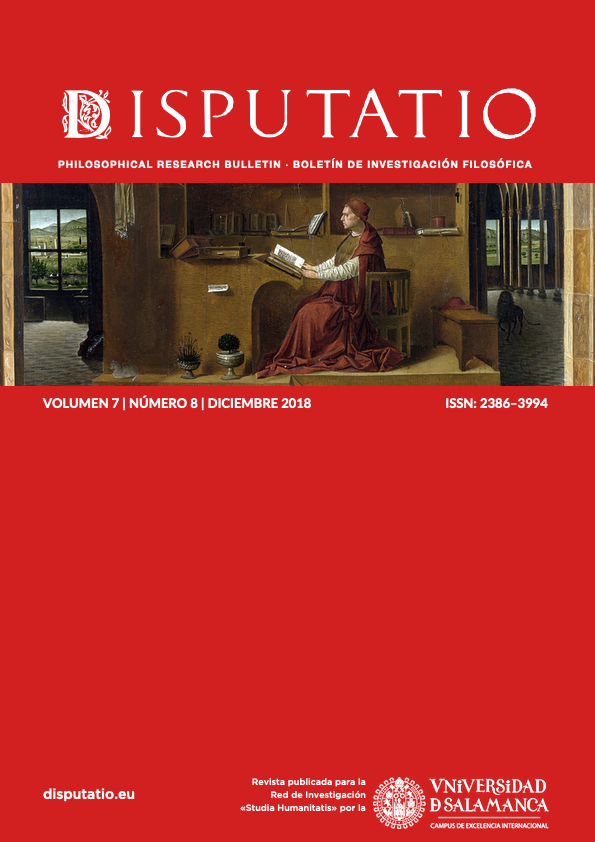Prácticas de gobernar y hacer inteligencias artificiales
Resumen
Con un énfasis en Estudios de Ciencia y Tecnología, este ensayo investiga la estandarización de la IA. A través de una cartografía social y sus herramientas conceptuales subyacentes, concluye que los estándares de IA son híbridos sociotécnicos a través de varios dominios, compuestos de asociaciones entre entidades heterogéneas, que abordan múltiples inteligencias artificiales. Los estándares de inteligencia artificial son de alto interés porque son más que simples asuntos técnicos: son políticos, requieren de mucho trabajo socio–técnico y de infraestructura, y contribuyen a cómo se practica la inteligencia artificial. En las redes de relaciones de estandarización, la inteligencia artificial y otros asuntos relacionados son ontológicamente múltiples, lo que plantea importantes cuestiones sobre la política y la ética de la inteligencia artificial.
Referencias
Barbrook, Richard (2007). “New York Prophecies. The Imaginary Future of Artificial Intelligence”. Science as Culture 16, no. 2: pp. 151–167. https://doi.org/10.1080/09505430701369027
Brown, Nik (2003). “Hope against Hype. Accountability in Biopasts, Presents and Futures”. Science Studies 16, no. 2: pp. 3–21.
Couldry, Nick (2017). “The Myth of Big Data”. In: The Datafied Society. Studying Culture through Data, edited by Mirko Tobias Schäfer and Karin van Es. Amsterdam: Amsterdam University Press, pp. 235–239. https://doi.org/10.1515/9789048531011-019
Deutsch, Karl (1963). The nerves of government. Models of political communication and control. New York: The Free Press.
EGE Statement (2018). “Statement on Artificial Intelligence, Robotics and ‘Autonomous’ Systems”. Edited by Publications Office of the European Union. European Group on Ethics in Science and New Technologies. Luxembourg.
Haraway, Donna (1988). “Situated Knowledges. The Science Question in Feminism and the Privilege of Partial Perspectives”. Feminist Studies 14, no. 3: pp. 575–599. https://doi.org/10.2307/3178066
Haraway, Donna (2008). “When Species Meet. Introduction”. In: When Species Meet, edited by Donna Haraway. Minneapolis: University of Minnesota Press, pp. 1–42.
Hayles, Katherine (1999). How We Became Posthuman. Virtual Bodies in Cybernetics, Literature, and Informatics. Chicago: The University of Chicago Press. https://doi.org/10.7208/chicago/9780226321394.001.0001
IEEE Global Initiative (2017). “Ethically Aligned Design. A Vision for Prioritizing Human Well–being with Autonomous and Intelligent Systems”. 2nd ed. Available at https://ethicsinaction.ieee.org/. Last Accessed on 27/01/2018.
Jordan, Sara (2017). “Becoming a Leader in Global Ethics. Creating a Collaborative, Inclusive Path for Establishing Ethical Principles for Artificial Intelligence and Autonomous Systems”. Edited by The IEEE Global Initiative on Ethics of Autonomous and Intelligent Systems. Available at https://standards.ieee.org/industry-connections/ec/autonomous-systems.html. Last Accessed on 27/01/2018.
Kenney, Martha (2015). “Counting, accounting, and accountability. Helen Verran’s relational empiricism”. Social Studies of Science 45, no. 5: pp. 749–771. https://doi.org/10.1177/0306312715607413
Latour, Bruno (1986). “Visualisation and Cognition. Drawing Things Together”. In: Knowledge and Society. Studies in the Sociology of Culture Past and Present, edited by Henrika Kuklick. Greenwich: Jai Press, pp. 1–40.
Latour, Bruno (1993). We Have Never Been Modern. Cambridge–Massachusetts: Harvard University Press.
Latour, Bruno (2004). “Why Has Critique Run out of Steam? From Matters of Fact to Matters of Concern”. Critical Inquiry 30, no. 2: pp. 225–248. https://doi.org/10.1086/421123
Latour, Bruno (2005). Reassembling the Social. An Introduction to Actor–Network–Theory. New York: Oxford University Press Inc.
Law, John (2017). “STS as Method”. In: The Handbook of Science and Technology Studies, edited by Ulrike Felt, Rayvon Fouché, Clark Miller, Laurel Smith–Doer. 4th ed. Cambridge–London: The MIT Press, pp. 31–57.
Law, John; Singleton, Vicky (2015). “ANT, Multiplicity and Policy”. heterogenities.net. Available at http://www.heterogeneities.net/publications/LawSingleton2014ANTMultiplicityPolicy.pdf. Last Accessed on 27/01/2018.
Mol, Annemarie (1999). “Ontological Politics. A Word and Some Questions”. The Sociological Review 47, no. 1: pp. 74–89. https://doi.org/10.1111/j.1467-954X.1999.tb03483.x
Mol, Annemarie (2002). The Body Multiple. Ontology in Medical Practice. Durham–London: Duke University Press. https://doi.org/10.1215/9780822384151
Natale, Simone; Ballatore, Andrea (2017). “Imagining the thinking machine. Technological myths and the rise of artificial intelligence”. The International Journal of Research into New Media Technologies 20, no. 10: pp. 1–16.
P7000 Working Group (2018). Meeting minute. Draft Agenda. With assistance of Sarah Spiekermann, Noah Brodbeck, Ali Hessami, Annette Reilly, Sara Jordan, Vicky Hailey. IEEE. Available online at http://sites.ieee.org/sagroups-7000/files/2018/03/20180126-P7000-Draft-Minutes.pdf. Last Accessed on 27/01/2018.
Puig de la Bellacasa, Maria (2015). “Making time for soil. Technoscientific futurity and the pace of care”. Social Studies of Science 45, no. 5: pp. 691–716. https://doi.org/10.1177/0306312715599851
Rogers, Richard; Sánchez, Natalia; Kil, Aleksandra (2015). Issue Mapping for an Ageing Europe. Amsterdam: Amsterdam University Press.
Shankar, Kalpana; Hakken, David; Østerlund, Carsten (2017). “Rethinking Documents”. In: The Handbook of Science and Technology Studies, edited by Ulrike Felt, Rayvon Fouché, Clark Miller, Laurel Smith–Doer. 4th ed. Cambridge–London: The MIT Press, pp. 59–85.
Star, Susan Leigh (1999). “The Ethnography of Infrastructure”. American Behavioral Scientist 43, no. 3: pp. 377–391. https://doi.org/10.1177/00027649921955326
Stengers, Isabelle (2005). “The Cosmopolitical Proposal”. In: Making Things Public. Atmospheres of Democracy, edited by Bruno Latour, Peter Weibel. Cambridge–Karslruhe: MIT and ZKM, pp. 994–1003.
Stola, Stephen; Bowker, Geoffrey (2017). “How Infrastructures Matter”. In: The Handbook of Science and Technology Studies, edited by Ulrike Felt, Rayvon Fouché, Clark Miller, Laurel Smith–Doer. 4th ed. Cambridge–London: The MIT Press, pp. 529–554.
Timmermans, Stefan; Epstein, Steven (2010). “A World of Standards but not a Standard World. Toward a Sociology of Standards and Standardization”. Annual Review of Sociology 36, no. 1: pp. 69–89. https://doi.org/10.1146/annurev.soc.012809.102629
Venturini, Tommaso (2010a). “Building on faults. How to represent controversies with digital methods”. Public Understanding of Science 21, no. 7: pp. 796–812. https://doi.org/10.1177/0963662510387558
Venturini, Tommaso (2010b). “Diving in magma. How to explore controversies with actor–network theory”. Public Understanding of Science 19, no. 3: pp. 258–273. https://doi.org/10.1177/0963662509102694
Venturini, Tommaso; Bounegru, Liliana; Jacomy, Mathieu; Gray, Jonathan (2017). “How to Tell Stories with Networks. Exploring the Narrative Affordances of Graphs with the Iliad”. In: The Datafied Society. Studying Culture through Data, edited by Mirko Tobias Schäfer and Karin van Es. Amsterdam: Amsterdam University Press, pp. 155–170. https://doi.org/10.1515/9789048531011-014
Winner, Langdon (1980). “Do Artifacts Have Politics?” Daedalus 109, no. 1: pp. 121–136.
Zarsky, Tal (2016). “The Trouble with Algorithmic Decisions. An Analytic Road Map to Examine Efficiency and Fairness in Automated and Opaque Decision Making”. Science, Technology, & Human Values 41, no. 1: pp. 118–132. https://doi.org/10.1177/0162243915605575
Derechos de autor 2018 © Disputatio

Esta obra está bajo licencia internacional Creative Commons Reconocimiento-NoComercial-SinObrasDerivadas 4.0.
Derechos de autor y política de acceso abierto: https://studiahumanitatis.eu/ojs/index.php/disputatio/policies/copyright



